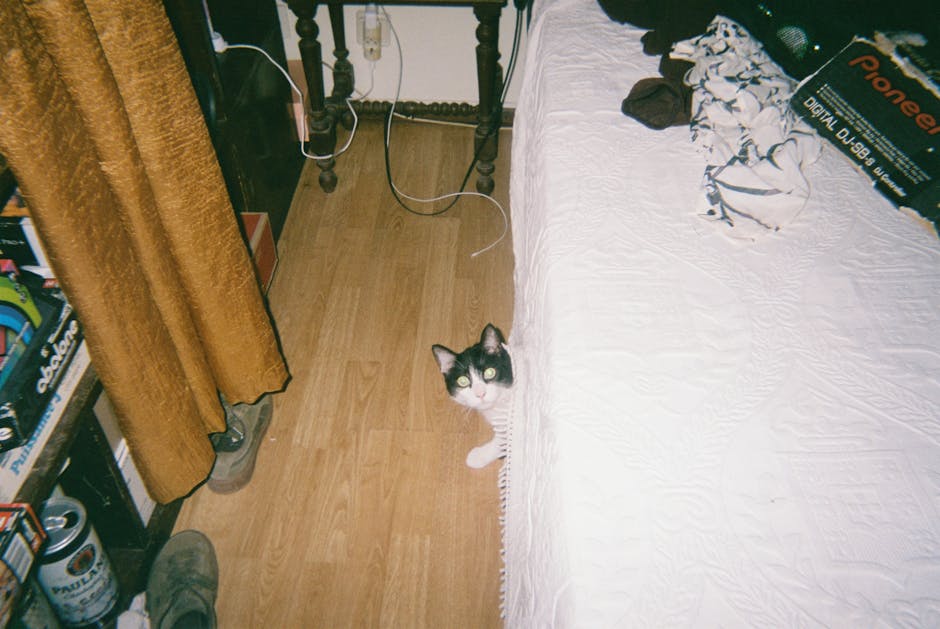home
How to hide clutter without buying more furniture

The endless battle against clutter is a struggle familiar to many. A home, meant to be a sanctuary, often morphs into a storage depot, overflowing with items that seem to multiply overnight. Buying more furniture, although tempting, often is not the correct solution; its a temporary fix that can actually worsen the problem by taking up valuable space and creating more surfaces for clutter to accumulate. The question then becomes: how to cleverly conceal the mess without adding more bulk to your living space, without further eating into square footage?
Embrace Verticality and Thinking Outside the Box
Look beyond the floor. Walls offer untapped potential for storage and concealment. Consider installing shelves that reach the ceiling. High shelves are good for storing items you don’t use everyday. Just grab that little step stool. Floating shelves, are another option that provides storage without sacrificing floor space, maintaining a minimalist aesthetic. They are very easy to make with the correct tools and knowledge. Wall-mounted cabinets, particularly in kitchens and bathrooms, are also a good way to increase storage without adding to the room’s footprint.
Beyond shelves, think about utilizing the backs of doors. Over-the-door organizers are available in a variety of styles and can be used in bedrooms, bathrooms, and pantries to store everything from shoes to toiletries to cleaning supplies. A full-length mirror mounted on a door not only serves a practical purpose, but can also conceal hooks or storage compartments behind it. Its like a secret room, but more convenient.
Repurpose Existing Items and Utilizing Hidden Spaces
Before you run out and buy new organizers, take inventory of what you already own. A large decorative basket can be used to store throw blankets and pillows in the living room. Old suitcases can be stacked to create a unique side table that also provides storage for books or magazines. Even cardboard boxes can be repurposed into stylish storage containers with a little creativity and some decorative paper or fabric. You’d be amazed at what a little DIY spirit will do.
Explore the hidden spaces in your home. The space under your bed can be used to store off-season clothing or extra linens in vacuum-sealed bags or shallow storage containers. The inside of ottomans or benches can be used to store toys, books, or other items. Even the space above your refrigerator or cabinets can be utilized for storing less frequently used items. Dont be afraid to think vertically!
Strategic Placement and the Art of Camouflage
Sometimes, the best way to hide clutter is to strategically place it out of sight. Tuck storage baskets behind furniture or under tables. Use decorative screens or room dividers to create separate zones in a room and conceal areas where clutter tends to accumulate. In a home office, a stylish file cabinet can be tucked under a desk or behind a chair to keep important documents organized and out of sight. No one likes to see a messy office area.
Camouflage is your ally. Choose storage containers that blend in with your décor. Opt for neutral colors and simple designs that won’t draw attention to the clutter they contain. Use decorative labels to identify the contents of each container and keep everything organized. Sometimes, the most effective way to hide something is to make it look like it belongs.
- The strategic utilization of existing furniture
- Smartly concealing items with curtains
- Harnessing the power of decorative boxes
Decluttering as a Way of Life: The Importance of Editing
While clever storage solutions can help to conceal clutter, the most effective way to combat the problem is to reduce the amount of stuff you own. Regularly declutter your home, getting rid of items you no longer need or use. Donating, selling, or recycling unwanted items not only frees up space in your home, but also helps to reduce waste. Aim for minimalism.
Establish a system for managing incoming items. Before you bring something new into your home, ask yourself if you really need it and where you will store it. Resist the urge to buy things on impulse. Implement a “one in, one out” rule, where you get rid of one item for every new item you bring into your home. Over time, this will help to keep clutter at bay. This really does work if you get into the habit of doing it.
The Psychology of Space: Visual Tricks and Illusions
Beyond physical storage, the way you organize your space can impact how cluttered it feels. Use light colors to make a room appear larger and more open. Maximize natural light by keeping windows clean and uncovered. Arrange furniture in a way that promotes flow and prevents bottlenecks. A well-organized space will feel less cluttered, even if it contains the same amount of stuff.
Mirrors are an essential tool for creating the illusion of space. Strategically place mirrors to reflect light and create the illusion of depth. A large mirror in a small room can instantly make it feel more spacious. Mirrors can also be used to conceal storage areas. For example, a mirrored cabinet can be used to store toiletries in a bathroom without making the room feel cramped.
Thinking Holistically
Ultimately, conquering clutter requires a holistic approach. It’s not just about finding clever storage solutions, but also about changing your mindset and habits. By embracing decluttering, utilizing existing space, and employing visual tricks, you can create a home that feels both organized and inviting. Get started today! I would recommend a small section of the home to start with. You dont want to overwhelm yourself and give up.
